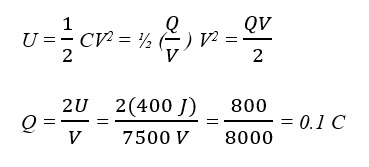No matter how hard you study and prepare for the MCAT physics, the actual test day might still bring you stress and anxiety. Sometimes, this could cause you to overlook simple details that could lead to a wrong answer.
During such instances, the key is to review and go over your answers again to ensure that careless mistakes are avoided.
After all, MCAT physics covers a lot of principles and equations that even the tiniest of errors could cause you a point.
If you are anxious about how you will fare in the MCAT physics and are looking for ways on how to review this part of the MCAT, this article is for you. Please keep reading.
What is MCAT Physics?
Physics studies how matter is structured and how its constituent elements interact. It entails studying nature in both its macroscopic and microscopic manifestations. Its scope includes the development and characteristics of gravitational, electromagnetic, and nuclear force fields and how different things respond to various forces.
Most students believe that physics has the fewest medical applicability of all the sciences. However, physics impacts all aspects of life, including medicine. In rehabilitation hospitals, doctors frequently discuss motion, forces, and bone strength with their patients. An eye doctor could give illustrations to help children grasp myopia and hyperopia.
And that is exactly why the MCAT includes physics.
Physics questions can be found in the Chem/Phys section of the MCAT.
Twenty-five (25) percent of the 59 questions in this area are physics-related. It means that a total of 15 MCAT questions will be used to evaluate candidates' physics knowledge and skills.Summary Table of Physics Distribution in the MCAT
MCAT Section | Physics Subject | Percentage | Number of Questions (out of 59) |
|---|---|---|---|
Chemical and Physical Foundations of Biological Systems | Introductory Physics | 25% | 15 |
Total Number of MCAT Physics Questions: 15 | |||
Physics Topics to Study for the MCAT
Physics covers a wide range of topics, not all of which will be covered on the MCAT.
To save time and effort, you should only study the subjects that will be on the MCAT when you take the exam.
The following is a list of the various ideas and subjects covered in the MCAT's physics:
How to Review for the MCAT Physics? 5 Proven Tips
It can be nerve-wracking to take the MCAT. However, it's much easier than you might think, despite the fact that it might seem difficult. You'll be able to accurately respond to the questions if you comprehend the various approaches and strategies.
We're here to help you succeed on the MCAT, and listed below are some of the best and most effective tactics you may use while you go over your MCAT physics answers.
Read and Comprehend the Questions
Before beginning the exam, carefully read the instructions to avoid making any procedural mistakes.
You can use this time to gather your thoughts and, if you're anxious, to relax.
Finding the keywords and the information that the question asks of you is necessary for understanding it.
You must specify the precise subject being tested by the question as well as whether it is a direct or application question.
You can get a hint on the formulas and concepts to use by determining the topic and making note of any units mentioned throughout the passage.
If the question is technical, draw a diagram to help you figure out the solution.
Example:
Under the water's surface, two wooden balls with equal volumes but differing densities are being kept. Balls A and B have densities of 0.5 and 0.7 grams per cubic centimeter, respectively. The balls will shoot up to the surface as soon as they are released. What connection exists between ball A's and ball B's velocities?
A. Ball A accelerates more quickly.
B. Ball B accelerates more quickly.
C. The velocities of balls A and B are equivalent.
D. Based on the information provided, it cannot be determined.
Explanation:
Take note that the question asks for the connection between the ball A’s and B’s velocities.
The equation that results from applying Newton's second law, F(net) = ma, is as follows:
F(bouy) - mg = ma, where F(buoy) = gV and = m/V
Thus, a = (F(buoy) - mg) / m = F(buoy)/m - g
Given that they are in the same liquid and have the same volume, both balls experience the same buoyant force (F(buoy) = Vg).
As a result, the ball with the smaller mass accelerates more quickly.
The ball with the smaller density has the smaller mass because both balls have the same volume ( = m/V). Therefore, ball A has the smaller mass.
The correct answer is A - Ball A accelerates more quickly.
Review Each Response
This means examining the parameters, especially units, of each answer choice to eliminate possibilities.
One can filter the choices by eliminating all irrelevant answers and comparing answer choices with eachother to eventually arrive at just one solution.
Return to the question often while doing this to make sure you're only removing irrelevant responses.
Example:
What attribute best describes the ideal voltmeters and ammeters?
A. The resistance of perfect voltmeters and ammeters is limitless.
B. Voltmeters and ammeters in their ideal state have no resistance.
C. Ideal ammeters have an infinite resistance, whereas ideal voltmeters have no resistance at all.
D. The ideal ammeter has a resistance of zero, and the resistance of an ideal voltmeter is unlimited.
Explanation:
Although this is primarily a recall question, it should make sense.
Voltmeters are designed to measure the difference in potential between two points. They should have infinite resistance to accomplish this and so that there is no second path for charge flow/current.
Ammeters should have no resistance since they don't add to the resistance of a series circuit and instead try to measure the flow of charge at a single location.
Therefore, options A, B, and C are all incorrect, and the correct answer is D - The ideal ammeter has a resistance of zero, and the resistance of an ideal voltmeter is unlimited.
Make Smart Guesses
When you analyze the responses to multiple-choice questions and are left with only two or three contested possibilities, you may find yourself in a difficult situation. When this occurs, utilize your ability to guess to save time.
However, try as much as possible to minimize guesswork by all means since it is dependent on luck. As you do this, remember that your original response is frequently accurate and stick with it.
Example:
The rationale for the upward thrust that enables airplane flying is Bernoulli's equation. Which statement best describes the relationship between the equation and flight?
A. Flight is not turbulence-prone because airflow speed on a wing's top and the bottom is equal.
B. The weight of the air that the wing expels is precisely proportional to the weight of the wing.
C. Because the curving top of the wing has a higher airflow speed, there is less pressure there, which creates a net upward force on the wing, which in turn causes flight.
D. Flight is produced as a result of a faster airflow over the flat bottom of the wing than over the curving top, which creates more pressure below the wing and a net upward push on the wing.
Explanation:
The question asks about the relationship between Bernoulli’s equation and the flight; therefore, option A should not be included.
If you cannot determine the correct response because there seems to be more than one correct possibility, try guessing and recalling every physics concept required for this question.
Keep in mind that air moves more quickly over an airplane wing's top because it must go further to the edge than it must over its flat bottom due to the curved upper surfaces and flat lower surfaces of an airplane wing.
Lower fluid pressure results from faster airflow. This will result from a stronger downward force and increased pressure underneath the wing.
Therefore, the correct answer is C - Because the curving top of the wing has a higher airflow speed, there is less pressure there, which creates a net upward force on the wing, which in turn causes flight.
Eliminate the Outliers
Some responses are simply off the mark.
For instance, your initial try can yield a decimal result if you are performing a calculation. If you try again, you might come up with a whole number that is comparable to your original response.
However, other solutions can involve numbers in the millions or even negative amounts. We refer to these as outliers, and you should eliminate them before you start discriminating your two contesting answers.
Example:
Two matching glasses belong to an opera singer. The first glass is broken at a frequency of 808 Hz by the singer, who attempts to generate the purest tone possible. The second glass is then present as she sings at a frequency of 838 Hz. The second glass probably will:
A. Shatter in a shorter period of time due to the higher applied frequency
B. Shatter over a longer period of time because of the greater applied frequency
C. Not break since there is more attenuation with higher-frequency sounds
D. Not break since the applied frequency is not the same as the glass's inherent frequency
Explanation:
Keep in mind that the question is asking what might happen with the second glass.
You just need to identify first whether it will break or not break. Regardless of your answer, you will then have two final options: A or B if you think it will break or C or D if you think it won’t break.
The fact that the first glass broke at 808 Hz indicates that this is very close to, if not precisely, the natural (resonant) frequency of the glass, even if the two glasses are totally similar.
The applied frequency will not cause the glass to resonate, and there won't be the increase in wave amplitude typical of resonating objects if it creates a frequency that is not equal to (or very close to) the natural frequency.
Because there is more motion over which nonconservative forces can dampen the sound wave as frequency rises, attenuation will increase.
However, even if the sound level were equal to that which broke the first glass while accounting for attenuation, the glass would still not shatter for the reasons outlined above, eliminating choice C.
Therefore, the correct answer is D - Not break since the applied frequency is not the same as the glass's inherent frequency.
Follow the Step-by-Step Procedure When Solving an Equation
If you are having trouble with an issue, simply follow the fundamental procedures for solving word problems. This means you need to identify first what the question is asking.
Then, identify the given facts and the equation needed for you to come up with the correct answer. If you are stuck on which equation to use, try using the given facts and their units in conjuction with the units of the answers to deduce it.
This is an extremely organized and effective method whenever you encounter MCAT questions (not just physics) that involve calculations.
Keep in mind that you need to get every detail correct or this technique will not be effective and in turn, will give you the incorrect answer.
Example:
The amount of energy kept in a fully charged capacitor is represented by U = ½ CV2. A capacitor charged to 7500 V in a common cardiac defibrillator has 400 J of stored energy. What is the capacitor's charge in the cardiac defibrillator based on this information?
A. 5 × 10-2 C
B. 1.1 × 10-5 C
C. 1.1 × 10-1 C
D. 3.1 × 106 C
Explanation:
Use the equation Q = CV since the question asks us to determine the capacitor's charge. We may get C using the formula, U = ½ CV2 if we are given the value of V as 7500 V.
Therefore, the closest option is C - 1.1 × 10-1 C.
Don’t forget that some variables may be used in multiple equations! If you are getting answers that do not match the answer choices, try thinking of other equations that use them.
How Much Time Should You Give Yourself to Study for the MCAT Physics?
You should put in a lot of time and effort for the MCAT because it's a challenging exam with many concepts to cover. It is not advised to take the MCAT unprepared. There should at least be a three-month (90 days) MCAT preparation period.
While preparing for the MCAT, it should be ideal to study for about six hours each day. Depending on how long you spend discussing each subject, you should ensure you spend enough time studying and understanding the numerous subjects needed.
About 25% of the MCAT Chem/Phys section is made up of physics. The best study strategy will suggest allocating at least 2 hours of your daily allotted 6 hours to preparing for the MCAT's chemistry and physics parts.
MCAT physics should take up at least 6 hours a week of your MCAT preparation, depending on how fast (or slowly) you are going and which areas are challenging you.
Occasionally, your obligations at work or school may require you to alter your plans. But remember to set aside one day each week for recreation or rest.
You don't want to be overworked or worn out when taking the MCAT.
Additional FAQs – Reviewing the MCAT Physics Section
How Do I Study for MCAT Physics?
Do not focus on memorization alone. Remember that the MCAT goes beyond simple recall. It is a test of critical thinking and application of the different scientific concepts and analytical thinking.
Is the MCAT Physics Hard?
However, you will be fine if you remember these equations and know when and how to apply them to relevant contexts and situations.
Another thing to keep in mind is to perform the basic math operations. Before taking the MCAT, have drills and practices to improve your basic math skills.
Are Calculators Allowed in the MCAT Physics?
If you can recall the MCAT physics equations and know how to convert units, answering the MCAT physics questions will be a breeze.
How Can I Improve My MCAT Physics Score?
Doing so will let you know the different areas that need further improvement.
You can also enroll in MCAT prep courses and MCAT tutoring for guidance and assistance from MCAT experts. Most students who did so attest to the fact that these two have contributed greatly to their high MCAT scores.
In addition, you can employ MCAT flashcards and mnemonic devices to help you remember and memorize the different MCAT physics equations and principles covered in the MCAT.
Ensure that aside from memorizing these terms and equations, you also know how to apply your MCAT physics knowledge and skills where relevant.



 To help you achieve your goal MCAT score, we take turns hosting these
To help you achieve your goal MCAT score, we take turns hosting these 















